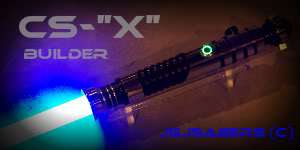Alright, So I am still learning about wiring and stuff but I made a diagram of my circuit. I want to use 2 SPDT slide switches (on-off-on) to change the colors of the saber.
I have an RGB LED and basically, when I switch the SPDT, it will change the color of the saber (red on 1 and off on 2 makes red, red on 1 and blue on 2 makes purple).
I am using:
2 trustfire 3.7V batteries (so 7.4 in total),
momentary to latching converter,
momentary switch,
2 SPDT slide switches (on-off-on),
an accent LED for the crystal (3.5V 10mA).
Screen Shot 2015-06-09 at 8.38.13 PM.jpg
So basically what I want to know is:
1. Is this doable? Is this correct?
2. How do I calculate the resistance of the accent LED? Since the current going to it depends on which LED is chosen right? (The resistor for red will be higher than the resistor for blue, and what if I choose purple? (red and blue)
3. I got this LED from a Ultrasabers hilt so I have no idea what the stats are (to measure the resistors). My voltage is 7.4V but what is the forward voltage and the forward current?
4. If I pick my resistor for blue to work as a normal blue lightsaber would, and same for red, would having them both on at the same time at that configuration not overheat the LED?
I got the idea from this guy in case that helps
http://forums.thecustomsabershop.com...rystal-Chamber
If you see any other problems with this, please let me know




 Reply With Quote
Reply With Quote







Bookmarks